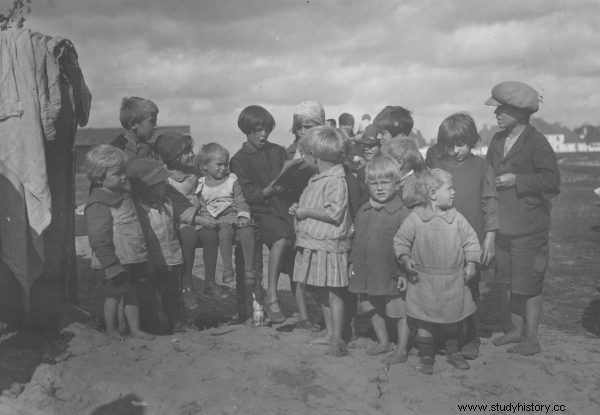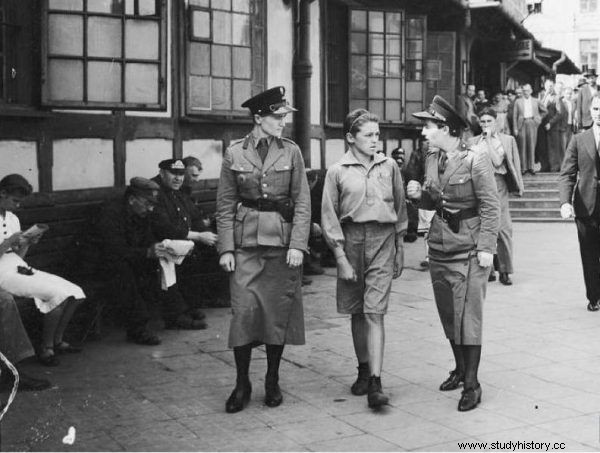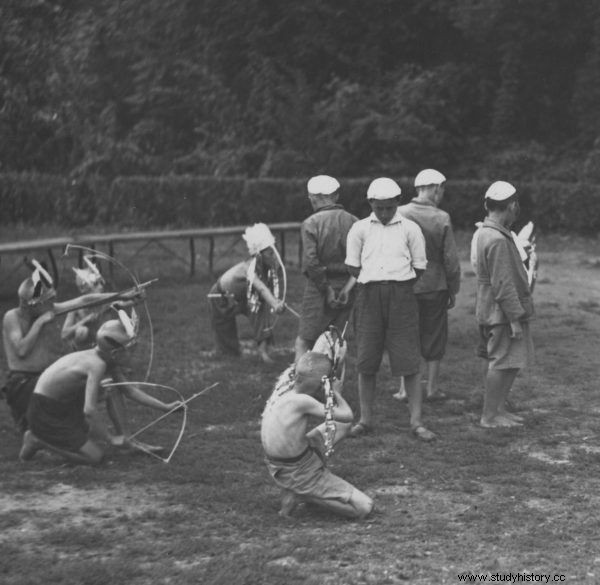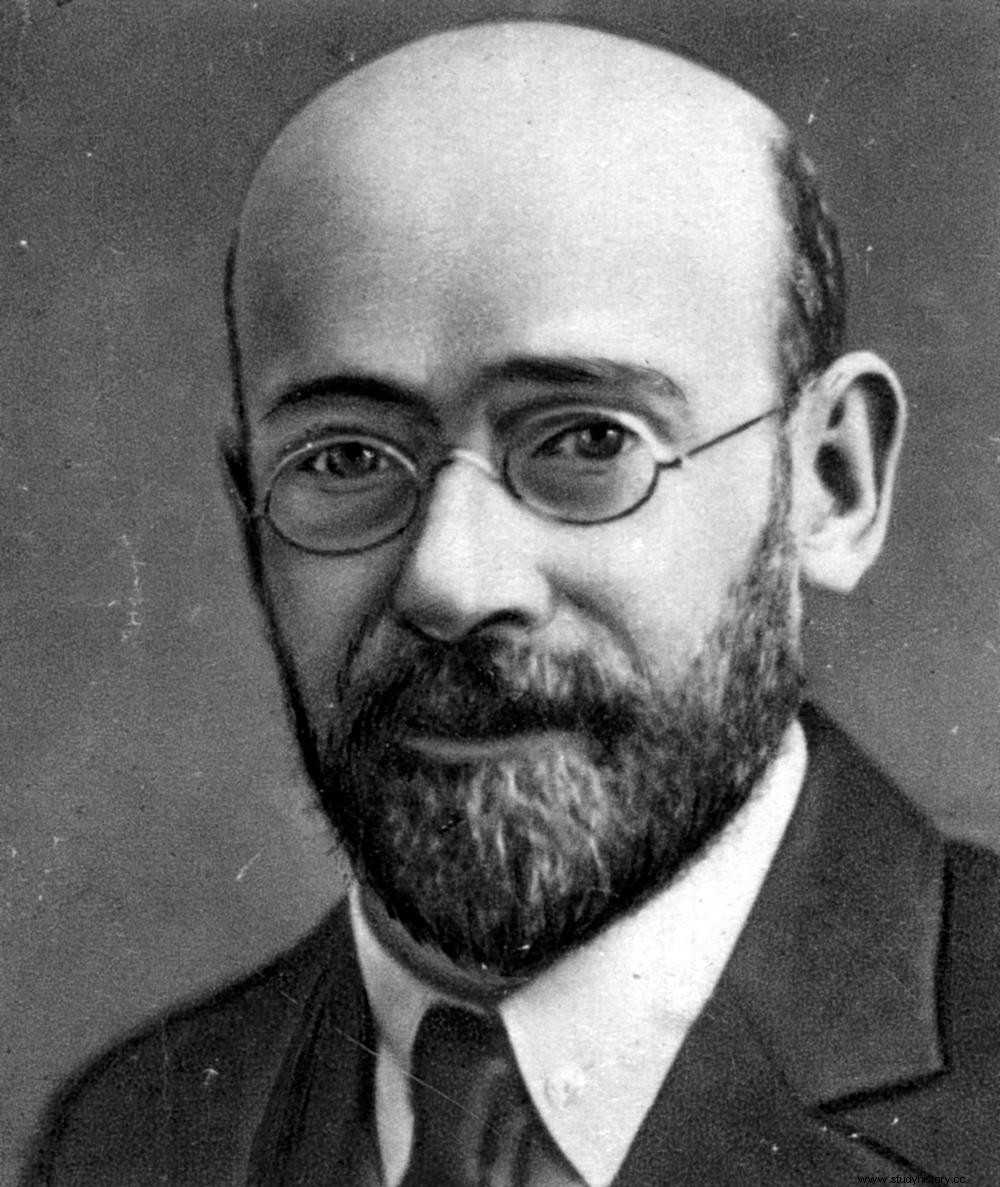Paris of the North? Certainly not. Not even Prague. The Polish capital was considered, on a par with London and Naples, as the most muddy city in Europe. Life outside the representative center was hard. The pathology of the poor colony degenerated everyone. But the children lost the most, as usual.
Krakowskie Przedmieście and Aleje Ujazdowskie were breathtaking before the war. However, the more densely built-up districts of Warsaw were associated rather with dirt and unprecedented crampedness. To illustrate the scale of the prevalent inconvenience, it is enough to mention that in houses built before the Great Depression, there was often no access to running water.
Wooden toilets were, next to Marian chapels, the main element of the interior of the capital's courtyards. And it is in this environment that little Varsovians grew up.
Poverty sir, poverty
Even in the opinion of the least demanding tenants, there was a lack of space in single-room flats, whose damp walls were soaked with smoke from leaky stoves. No wonder that families with many generations, and usually also with many children, used every free angle. There were many people sleeping in the stairwells. It was also not uncommon to populate stuffy cellars.
The poor sanitary facilities and the harsh conditions of the housing market in pre-war Warsaw were not conducive to raising children to become law-abiding citizens. Yet children growing up in dilapidated wells could call themselves lucky. For many others, fate was less kind. Especially the little ones living in poor camps were doomed to live in extreme poverty and terrible pathology. Housing estates for the homeless, serving as social housing, were the hotbed of all diseases affecting Warsaw at that time.

In the interwar period, there were many homeless people in Żoliborz. The protagonist of the book "Black Character" by Łukasz Stachniak, although he was a child raised in the pre-war capital, did not suffer such poverty (source:public domain).
The most famous of these estates, commonly known as "typhus", was located in Żoliborz, right behind the Gdańsk Railway Station. It consisted of only 52 one-story barracks. Meanwhile, the colony was inhabited by almost 3,000 people ! Another thousand camped in makeshift dugouts built around overcrowded clogs. The whole thing, fenced off with barbed wire, looked more like a penal facility than a housing facility.
The settlement in Annopol, inhabited by 11,000 people, was covered with a similar disgrace. They were placed on the premises of the planned central slaughterhouse. It must have been a terrible experience growing up in a place like this. The youngest inhabitants did not have a chance for proper development. There was a shortage of medical care, bathing and laundry facilities. Disease, fear and deviation were plentiful.
There were other, smaller housing estates and hostels in Warsaw. They gave way to the Żoliborz district, but were still commonly regarded as ulcers grown on the city tissue. One of them was "Polus" at 30/32 Lubelska Street. The next ones were located at Podskarbińska and Powązkowska streets, the other two at Okopowa and the same number at Leszno. They could also be found at Moczydło, Stalowa and Zawisza Streets. They were all real breeding grounds for crime. Their youngest inhabitants also became criminals.
Little thieves…
Probably no craftsman's guild offered the minor residents of pre-war Warsaw as many career paths as the criminal community. Young adepts of the art of thieves could even choose shady professions. To start, it was enough to define your own predispositions and interests.
The more patient were educated in secret academies preparing for the profession of "pickpockets", or pickpockets. The more physically fit and the more insolent, they engaged in the so-called brook:they stole from open carts what they could get their hands on. Most often how the locusts attacked the suppliers unloading the goods . The impatient, however, managed to empty the transport even on a busy road.
For those who want nothing difficult - there were plenty of possibilities. Children thirsty for even a small coin offered their help to representatives of the Warsaw underworld. They assisted the street crooks who played three cards. They scouted and stood on vigils to warn thieves of possible dangers. Or, while preparing the robbers to work properly, they twisted the bulbs out of the street lamps.

Policewomen lead the young pickpocket to the detention center through the streets of Warsaw in 1939 (source:public domain).
… and murderers
Child crime was so common that only extremely brutal crimes attracted the attention of the press of the time. The case of Janek Panasiuk, who murdered his colleague Mikołaj Starościuk in 1931, attracted journalistic attention. The story was told by the readers of Gazeta Warszawska.
It all started with the fact that sixteen-year-old Panasiuk, a small and rather small boy, went with a friend to the Vistula River. Go for a walk, take farts, no adventure there. But a day later, the whole of Warsaw was spread over the news that Starościuk's body had been found. Headless . This one, separated from the body, rested in the nearby bushes.
A bloodied knife was found near Panasiuk. It was enough to bring him under the heaviest charge. Soon after, the accused pleaded guilty. The reason for the decapitation of my colleague turned out to be no less shocking than the act itself. It was enough that Starościuk expressed a negative opinion about the Panasiuk family.

In this photo from a summer camp for poor Warsaw residents from 1936, children are only playing killing. Unfortunately, sometimes one juvenile liquidated another in a very brutal manner (source:public domain).
The juvenile murderer received an exceptionally light sentence - only ten years' imprisonment. There were many like him. Usually they served their sentences in a prison in Lubliniec. It was a place of notoriety that was unmatched anywhere in the country. One-third of its residents ended up behind bars before reaching maturity. Among the most experienced prisoners were those who had been deprived of their freedom in law when they were only seven or eight years old at the most. A ten or fifteen-year-old criminal in Lubliniec did not cause any surprise.
Antoniaki - the few who got the chance
Sometimes, paradoxically, children who ended up on the street had more chances for normality. There was no shortage of institutions in the capital aimed at helping the smallest citizens. The Women's Police Department of the Central Investigation Service devoted a lot of attention to help children left on their own, before the harsh material of the city demands them.
This concerned, for example, unwanted babies. The punishable abortion unfortunately led to an escalation of the practice of abandoning newborns. However, given the likely vicissitudes that lay ahead, for many, this meant a better prognosis than growing up in the family home.

The fate of children in pre-war Warsaw is shown, among others. in the book "Black character" by Łukasz Stachniak (Znak Horyzont 2017).
For example, the Youth Educational Center was considered a child-friendly place (in the proper sense of the word). It was opened on the initiative of the priest prelate Franciszek Toporski, called for this reason "the father of orphans". The common name of this shelter for boys from Warsaw and the surrounding area - "Antonin" - came from the patronage of Saint Anthony of Padua. It started to function in 1913, i.e. a few years before the Republic of Poland regained its independence. And she took care of orphans in Warsaw until 1954.
Another facility offering help to juveniles, and in addition to them also to old people, was located at Leszno 127 / Wolska 18. It operated continuously from 1843 until the outbreak of World War II. In 1935, even a Nursing Home for Abandoned Jewish Children was moved there from Płocka Street. Thus, the facility was given a truly educational character.
Help for Warsaw orphans was also organized by the legendary social activist Janusz Korczak . In an exceptionally shady area, at 92 Krochmalna Street, he, together with Stefania Wilczyńska, ran an orphanage for Jewish children. This facility even had a branch. The so-called "Różyczka" was opened in Wawer near Warsaw. Korczak was also involved in the activities of a similar institution, however, intended for Catholic children. The "Nasz Dom" Educational Institution in Pruszków and its counterpart in the capital city of Bielany guaranteed a place for over 150 children.

Janusz Korczak (source:public domain) also helped orphans in Warsaw.
The helping institutions, however, were not able to reach all the street urchins in need. And the fate of those who did not come under the protective wings of one of them was unenviable. They could even fall prey to human traffickers, such as Wanda Szefnerowa.
The woman was suspected of, among other things, kidnapping a baby in 1933. The press reported that she provided children to beggars. Why them? Because - explained - not every beggar has children of their own, and renting out on a day's wages is expensive, so she willingly buys a child .
Bibliography:
- Urszula Glensk, A story of the weak. Reportage and life in the twenty years (1918-1939) , Universitas 2014.
- Unbeatable neighborhoods. Reports on interwar Warsaw , selection and editing Jan Dąbrowski and Józef Koskowski, PIW 1964.
- Mateusz Rodak, Homeless shelters in interwar Warsaw , "Problems of Social Policy. Studies and discussions ”No. 15 (2011).
- Łukasz Stachniak, The villain, Horizon 2017 sign.
- House of shelter for the poor, orphans and old Jews (ul. Leszno 15) , Virtual Shtetl.
- The history of the house at ul. Barska 4 in Warsaw, Youth Educational Center of Orionist Fathers.
- Aleksander Lewin, Korczak known and unknown, Editorial Agency Ezop 1999.
- A baby was kidnapped yesterday , "Daily News" March 27, 1933.
